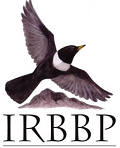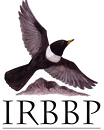
Bearded Tit
Panurus biarmicus
Meantán croiméalach
Status All Ireland: Breeding (Republic only), new coloniser, with expanding distribution
Population estimate all Ireland: < 5 pairs
Trend (12 years): Increase
Trend (40 years): Increase
Survey timing: May to July
Habitat: Reedbed (wetland)
Occurrence: Localised breeding has been confirmed in coastal reedbeds in the southeast and east (Counties Wexford and Wicklow).
Habitat preference (simple description of preferred nesting habitat): Phragmites reedbeds. Usually in large or extensive stands of mature reeds in non-tidal wetlands. So far, breeding in Ireland has been confined to coastal sites, but there is potential for colonisation further inland.
Preferred ways to establish breeding status: This species can be quite secretive, spending much of the time foraging for seeds on mud or floating vegetation at the base of reeds. The best chance to see them is when they fly low over the reeds for maybe 100m before plunging down into the reeds again. Listen for the “ping -ping..” call, usually uttered just before they take to the air. Highly gregarious, even when feeding young, so often several birds will fly together. Juveniles will sometimes help feed the next brood or may even breed themselves when only a month or so old. Best time to prove breeding is when adults are carrying food for young. If a bird is seen flying several times to the same spot in the reeds over say an hour, it is likely a nest is located there. They will often fly from the nest to the same particular foraging spot some distance away several times in succession. Watch with binoculars to see if bird carrying food. As some reedbeds can be extensive, with few high vantage points to see far across the reeds (and the birds are often quite distant), it can be difficult to see enough detail to prove breeding. A glimpse of a fledged juvenile however is good proof – resembles female but shows a distinctive patch of black on the back and also along the outer tail feathers. Patience is required – there may be long waits between the periods of birds showing themselves.


